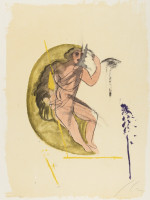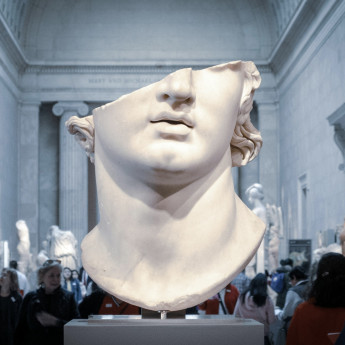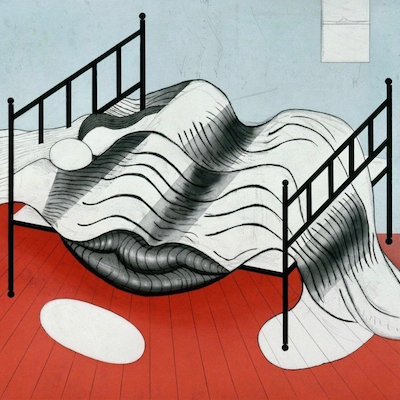
Details
Artist
Styles
Acrylic and oil on hand-painted ceramic. - Support: cement and iron - Signed on the base. - Bibliography: Sandro Chia, Sculpture, Figures with Tree and. Domestica, 1994, p. 10-11 - M. Pratesi: "De Statua - Aspects Of Italian Sculpture Of The Twentieth Century" 2003, Ed. Masso delle Fate, Signa (FI), p. 81. // Sandro Chia’s Figure con albero is a hand-painted ceramic sculpture created in 1994. The piece depicts a trio of abstracted figures, positioned in a dynamic and intimate grouping, set against a stylized tree. The vibrant use of acrylic and oil paints brings a sense of immediacy and energy to the work, with bold colors like yellow, black, and pink applied to emphasize the flowing forms of the figures. The tree, rendered in green, serves as a backdrop that adds both depth and symbolism, possibly referencing themes of growth, shelter, or rootedness. The rough, textured surface of the ceramic creates a tactile quality, further enhancing the expressive nature of the sculpture.Chia, a key figure in the Transavanguardia movement, often explores the human condition, mythological themes, and classical forms through his works. In Figure con albero, the intertwining figures seem to suggest a narrative of connection, protection, or familial bonds, all conveyed through Chia’s characteristically dynamic, expressive style. Signed on the base, the sculpture is supported by cement and iron, grounding its sculptural presence both physically and conceptually.
Figure con albero, 1994
form
Medium
Size
63 x 38 X 32 cm
- Inches
- Centimeters
Edition
Price
- USD
- EUR
- GBP
Details
Artist
Styles
Acrylic and oil on hand-painted ceramic. - Support: cement and iron - Signed on the base. - Bibliography: Sandro Chia, Sculpture, Figures with Tree and. Domestica, 1994, p. 10-11 - M. Pratesi: "De Statua - Aspects Of Italian Sculpture Of The Twentieth Century" 2003, Ed. Masso delle Fate, Signa (FI), p. 81. // Sandro Chia’s Figure con albero is a hand-painted ceramic sculpture created in 1994. The piece depicts a trio of abstracted figures, positioned in a dynamic and intimate grouping, set against a stylized tree. The vibrant use of acrylic and oil paints brings a sense of immediacy and energy to the work, with bold colors like yellow, black, and pink applied to emphasize the flowing forms of the figures. The tree, rendered in green, serves as a backdrop that adds both depth and symbolism, possibly referencing themes of growth, shelter, or rootedness. The rough, textured surface of the ceramic creates a tactile quality, further enhancing the expressive nature of the sculpture.Chia, a key figure in the Transavanguardia movement, often explores the human condition, mythological themes, and classical forms through his works. In Figure con albero, the intertwining figures seem to suggest a narrative of connection, protection, or familial bonds, all conveyed through Chia’s characteristically dynamic, expressive style. Signed on the base, the sculpture is supported by cement and iron, grounding its sculptural presence both physically and conceptually.
- Recently Added
- Price (low-high )
- Price (high-low )
- Year (low-high )
- Year (high-low )
Sandro Chia
Untitled (Columbus: In Search Of A New Tomorrow), 1992
Limited Edition Print
Screen-print
Inquire For Price
What is Postmodernism?
Postmodernism is an art movement that emerged as a reaction against authority and traditional boundaries, seeking to blur the lines between art and everyday life. It aimed to bridge the gap between the cultural elite and the general public by embracing eclectic mixtures of earlier conventions and styles. Postmodernist art often challenges established norms and celebrates diversity, irony, and pastiche, making it a movement that reflects the complexities of contemporary culture.



















